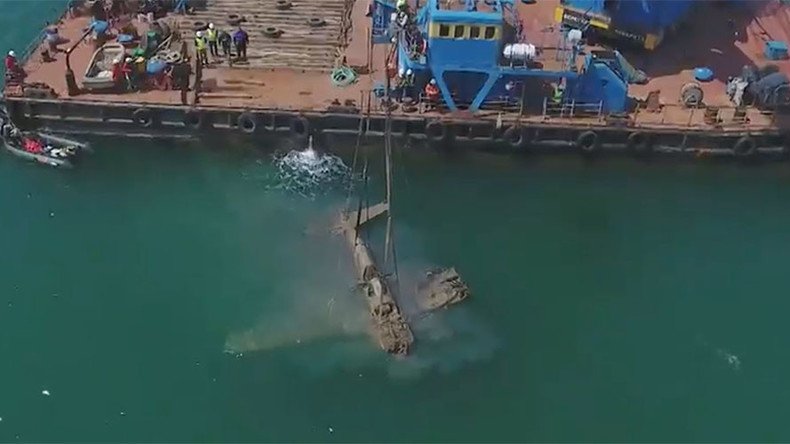Drone captures lifting of US-made warplane that sank near Russia in WW2 (VIDEOS)

A US Curtiss P-40 fighter plane that sank in the Kerch Strait near Crimea has been lifted from the seabed. It was likely part of the US’ Lend-Lease program and had probably taken part in a Soviet operation against Nazi Germany in the area in 1943.
The airplane was first discovered some six kilometers from the coast by divers searching for mines and bombs left in the strait after World War II in preparation for the construction of a bridge that will connect the Crimean Peninsula with the Russian mainland. The aircraft was lifted by a floating crane borrowed from the bridge construction project by a historical reconstruction group, that wants to make the discovered aircraft part of a future exhibition.
The group’s leader, Aleksandr Yolkin, said the P-40 is a later modification of an American plane dubbed the Kittyhawk. It was most likely one of more than 1,000 planes the Red Army used in its Kerch-Eltigen Operation of 1943, which paved the way for the eventual recapture of Crimea from Nazi Germany and its allies.
“The plane was apparently damaged during a combat mission by enemy AA fire. It was laying on the seafloor with its nose pointing to the Taman coast. The pilot had probably been trying to return to the base,” he said. “The plane didn’t crash into the strait. This was apparent by its preserved hull. Most likely the pilot brought it down to the water surface and may have survived.”
The plane has significantly deteriorated after spending seven decades underwater. Its wings were torn off by gravity as the crane pulled it out of the water and its tail was damaged as well, footage of the recovery operation shows. However, the researchers say the engine is in good enough condition to read the aircraft’s identifying markings and, hopefully, its pilot.
The Kerch-Eltigen Operation was one of the USSR’s biggest amphibious offensives in World War II. It involved over 130,000 troops and over 250 ships. Though it was a costly operation that saw only limited success, it did allow Soviet troops to secure a solid foothold in Crimea, from which another major offensive was launched in 1944.












